
Volkswagen’s Strategy to ‘Accelerate’ Its EV Drive
- Mar 8, 2021
- Views : 3091


At the time of its launch in 2020, everyone, including us, believed that Volkswagen’s Rs 20 lakh (ex-showroom) price tag on T-Roc was a bit too much. However, Volkswagen has still managed to find buyers for all the 1,000 units that it brought to India and is now looking to bring in a new batch in the upcoming months. Part of the reason that the T-Roc is so expensive is that it is imported to the country, thus attracting a steeper tax. So how did VW find buyers for an SUV that’s smaller than the Creta and yet costs Rs 3 lakh more than it? Let’s find out how.
It has got a handsome tux to start with
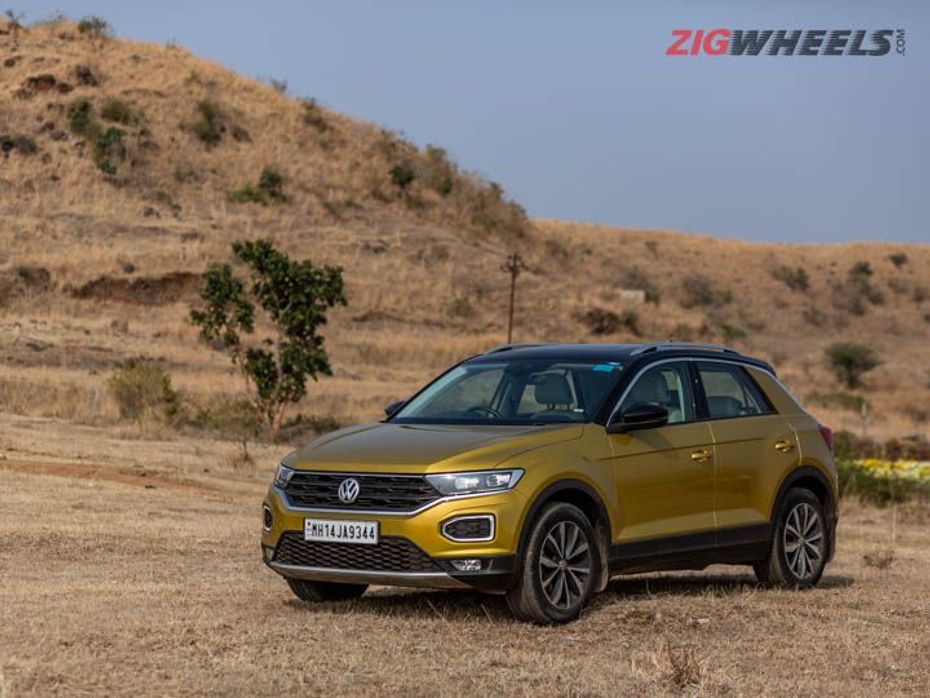
The magic begins as soon as you lay eyes on the T-Roc. Its face effortlessly marries the grille with the headlamps. There is a neat hexagonal cut-out on the bumper that could easily be mistaken as a fog lamp. It instead houses the wrap-around LED DRLs. The fog lamps are located further down on the bumper.
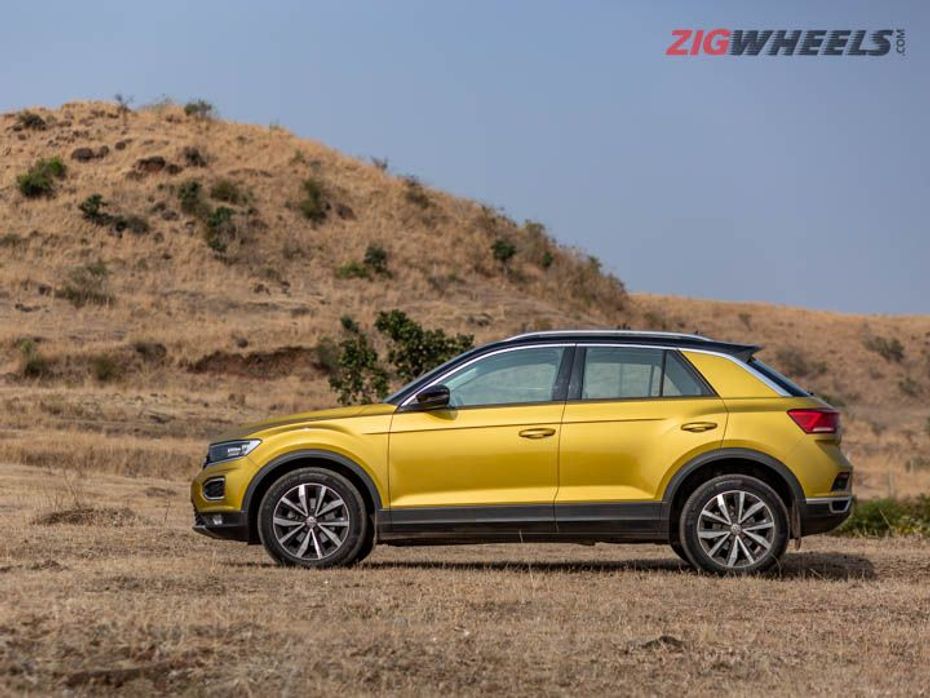
At the side, the T-Roc’s low stance is evident. It’s even lower than some sub-4 metre SUVs, with the swooping roofline giving it a more sports-car vibe rather than an SUV’s. The 17-inch wheels nicely fill the wheel arches, partly because the T-Roc isn’t all that big.
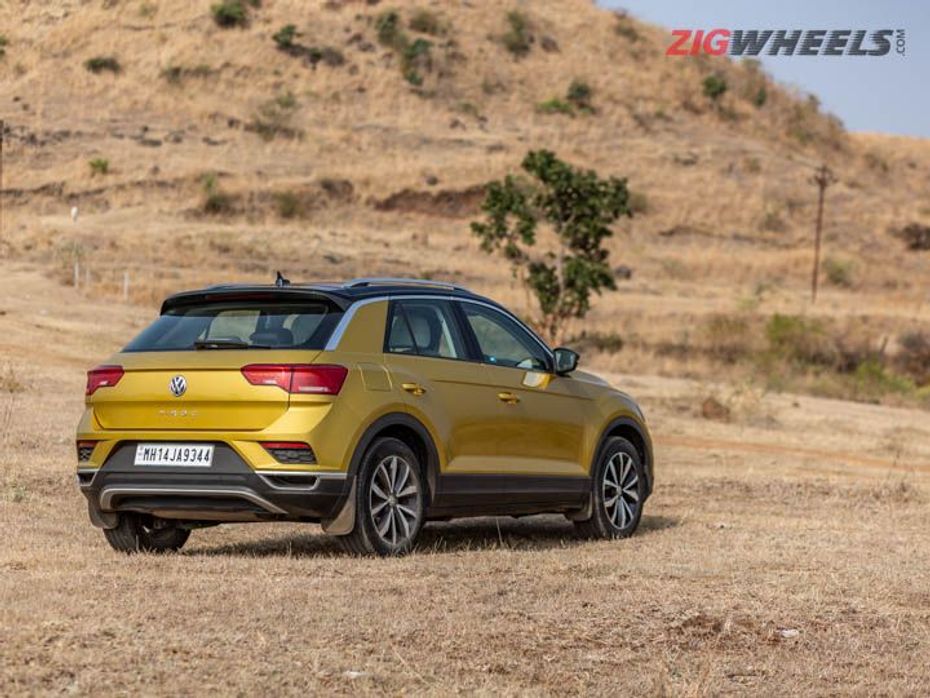
The T-Roc seems the prettiest when you look at it diagonally from the rear. The super-raked rear windscreen, extending out of the blacked-out roof, looks like it belongs in a modern art gallery. The wrap-around tail lamps feature LEDs, and even the faux exhausts on both sides look good. VW has done a good job of hiding the actual exhaust, so as to not spoil the view.
The T-Roc is then very European in the way it looks. Sporty yet classy, stands out but still remains understated; the T-Roc, in my opinion, is the best looking car south of Rs 20 lakh!
Things are classy on the inside as well
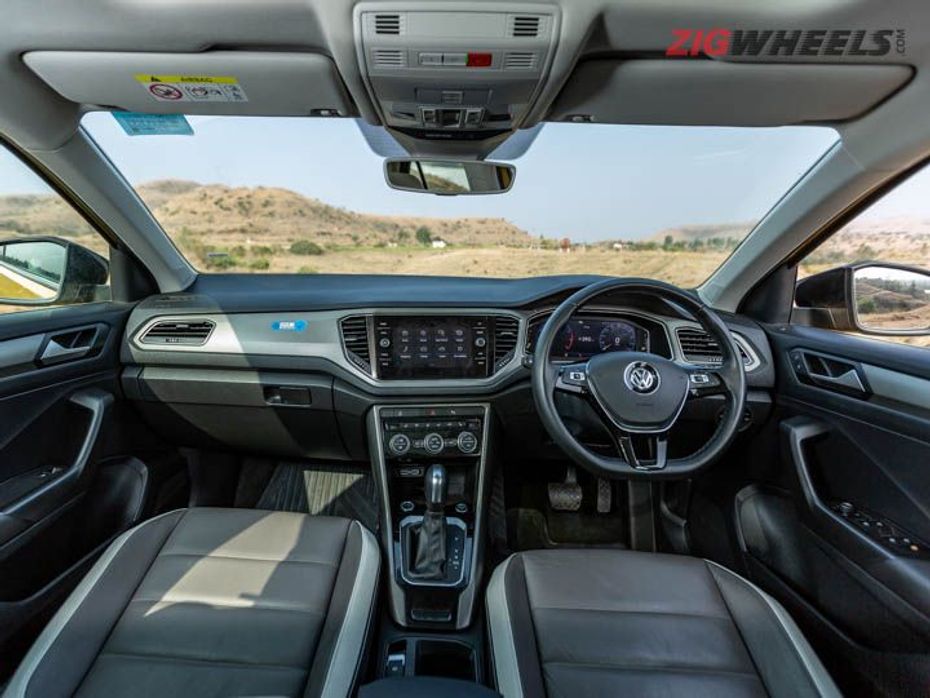
Step inside, and you immediately notice that the T-Roc’s cabin is a rather cozy place. It will take in four people comfortably, but five suddenly becomes a stretch. However, the seats feel well-cushioned and supportive, and will hold you comfortably in your place, even for hours on end. The rear seats are placed at such an angle that you get great back and underthigh support at the same time. The one drawback here is that the seats can feel a tad bit small for larger people.
The fit and finish of all the panels inside is excellent, but it is a lack of soft-touch materials around the cabin that might irk some. The hard plastics, though, are of good quality; until you go knocking on those, you wouldn’t mind them being there. The touchpoints like the steering, shifter, armrests, and door pads get tiny bits of soft-touch surfaces, so that’s good.
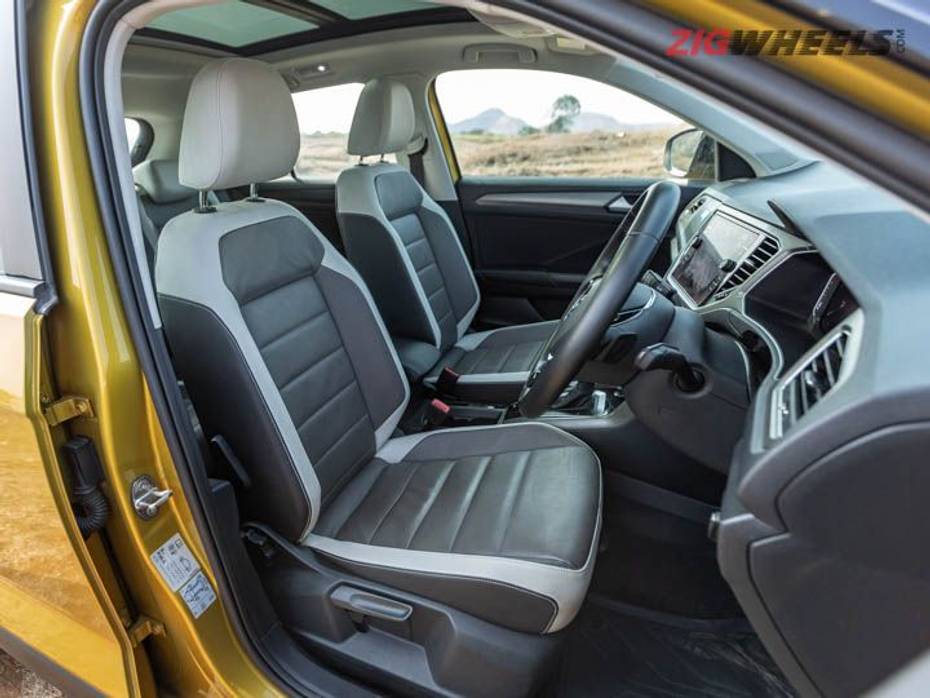
VW has done up the seats in a triple-tone colour scheme that seriously looks cool, and even stands out from the single or dual-tone interiors we are used to seeing on most cars. The panoramic sunroof along with the huge glass area means that the cabin feels breezy due to an abundance of natural light. And my personal favorite are the rear windows that unwinds all the way to the bottom unlike those in other VWs!
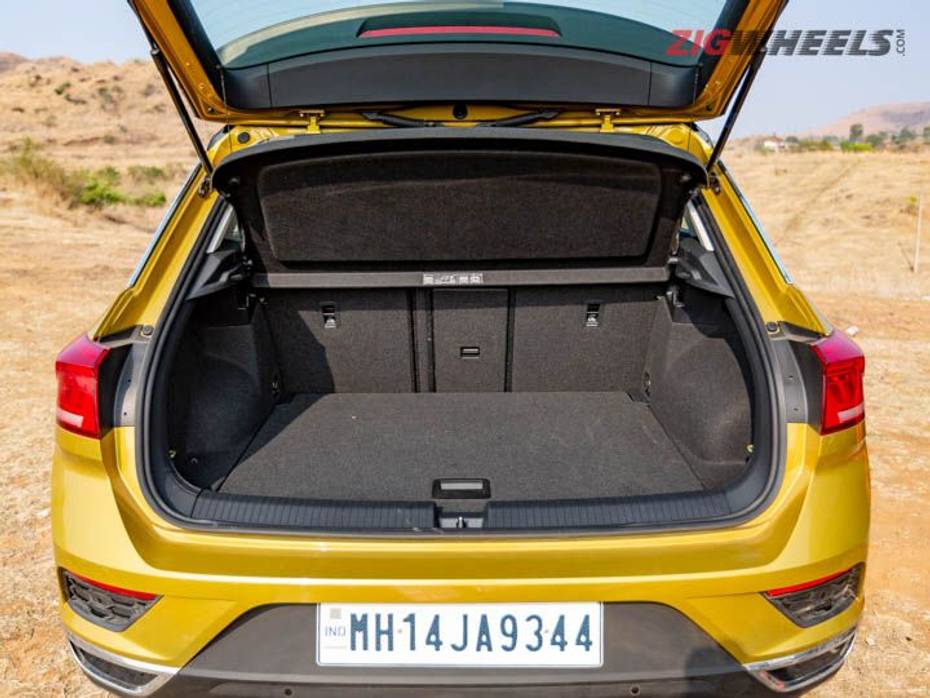
The boot space in the T-Roc is 445 litres, more than what you get in the Hyundai Creta or Kia Seltos. Now sample this. The T-Roc is almost 7cm and 8cm shorter in length than the Creta and Seltos, respectively. And yet, it beats them both for boot space.
Got some gizmos
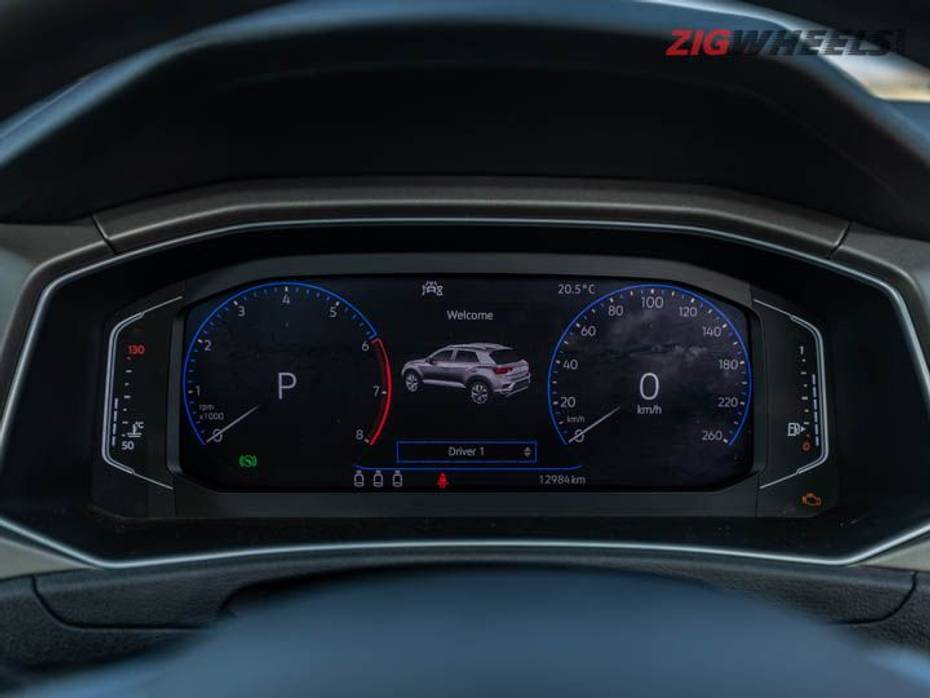
One of the departments where the T-Roc does fall behind the Creta and Seltos is its features list. While it can hold its own in a sea of Indian cars, there isn’t anything that stands out. There is a 10.2-inch fully customisable MID that has crisp graphics and can be tailored to your needs. The touchscreen offers great clarity and intuitiveness.
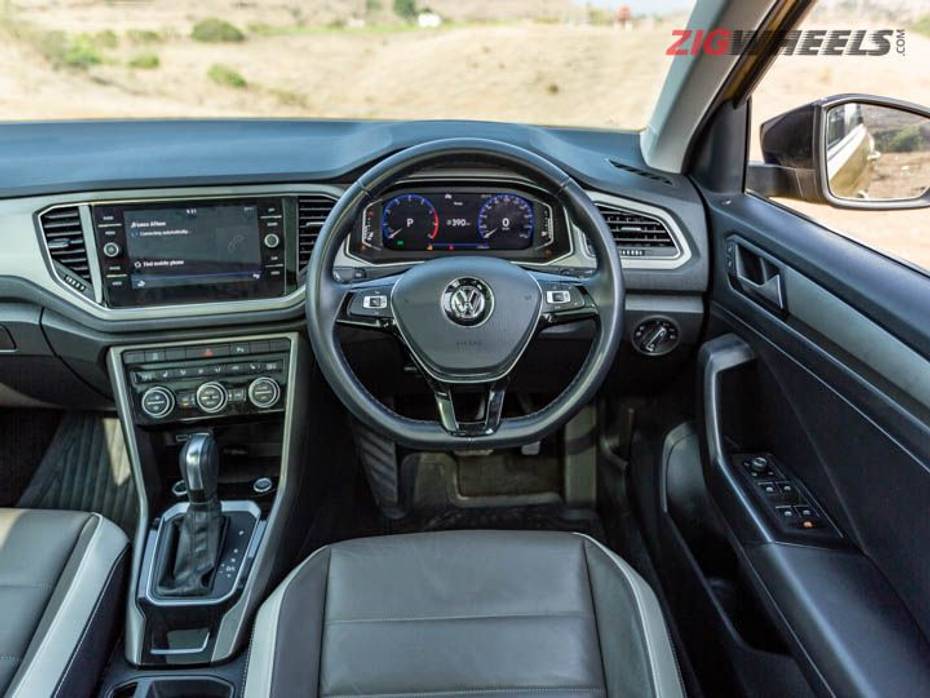
Volkswagen is also offering an 8-inch touchscreen that supports Apple CarPlay and Android Auto, dual-zone climate control, a start-stop system to save fuel, a panoramic sunroof, and paddle shifters. However, the paddle shifters are really small and almost hidden behind the steering wheel. But once you figure where they are, they are extremely easy to use.
Then there are the heated seats! Yes, heated seats. You see, the T-Roc is imported from Europe, where heated seats are required almost across the year. In India, however, they wouldn’t be needed, unless, of course, you live in the Himalayas!

Volkswagen could have been smarter here; made a little effort and offered cooled, ventilated seats in the cars sold in India. Instead, you will be paying for a feature that you will probably never use, and that does pinch a little. And finally, cruise control is missing, which is a big miss, considering it is a Rs 20 lakh car we’re talking about!
Got your back
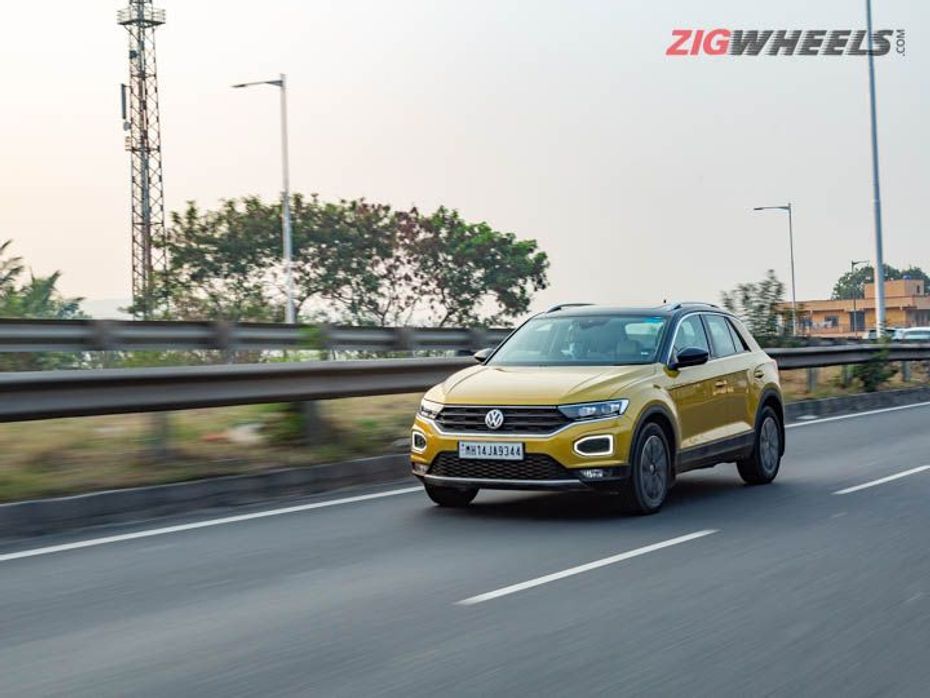
But don’t fret about cruise control. Because Volkswagen is offering front-driving assists, lane-keep assist, and automatic emergency braking. What is that, you ask? Simple. Front-driving assist warns you about obstructions around the front of your car at slow speeds. Lane-keep assist functions gently give steering inputs to keep you in your lane, while the automatic emergency braking will apply the brakes on its own if it senses an obstacle in your path (one that you may have missed).
Front assists are good for parking in close proximity to other vehicles, whereas the lane-keep assist function is a nice feature to have on highways, gently nudging you to get back into your lane should you go out of it.
These aside, you get ABS, ESP, auto-hold, four disc brakes, six airbags, and ISOFIX mounting points as additional safety features.
Mighty heart!
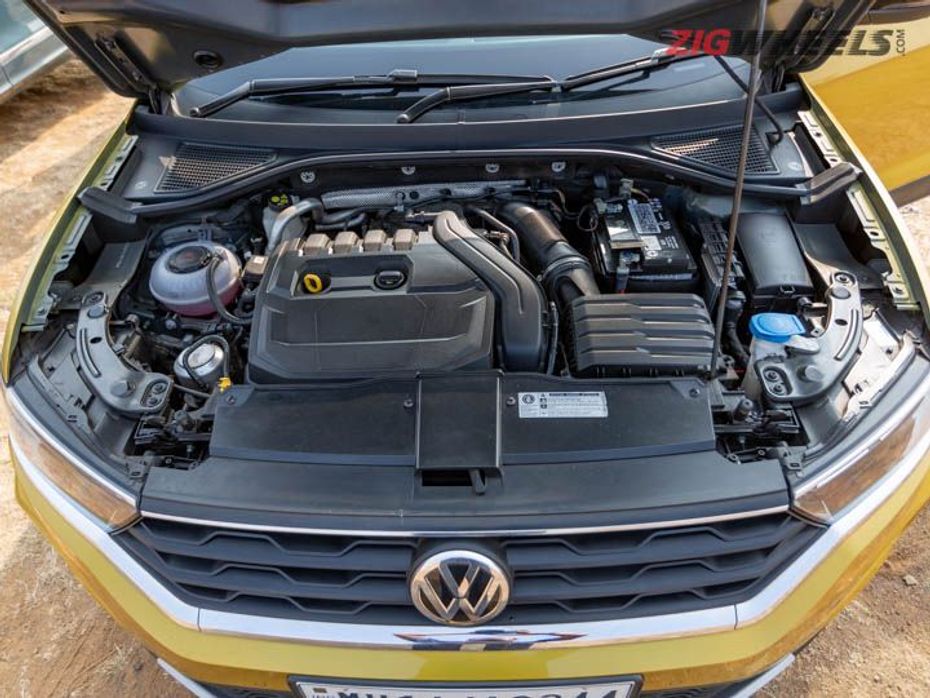
VW has plonked in their new 1.5-litre TSI Evo engine in the T-Roc. It dishes out 150PS and 250Nm of torque, much like the European versions of the SUV. You are, however, limited to a 7-speed DSG transmission only here in India.
The engine is refined; barring the start sound, it’s almost eerily silent when idle. There is almost zero vibe emanating from it when you are at a standstill, so much so that it’s hard to tell if the engine is switched on or not. There is turbo lag below the 2000-rpm mark, but the DSG does a good job of masking it by always being in the right gear and keeping you above that mark. So, when you put your foot down, the T-Roc simply wafts forward without any fuss. In the ‘Drive’ mode, the shifts are as smooth as butter; it’s hard even for the driver to understand when exactly the DSG is working its magic.
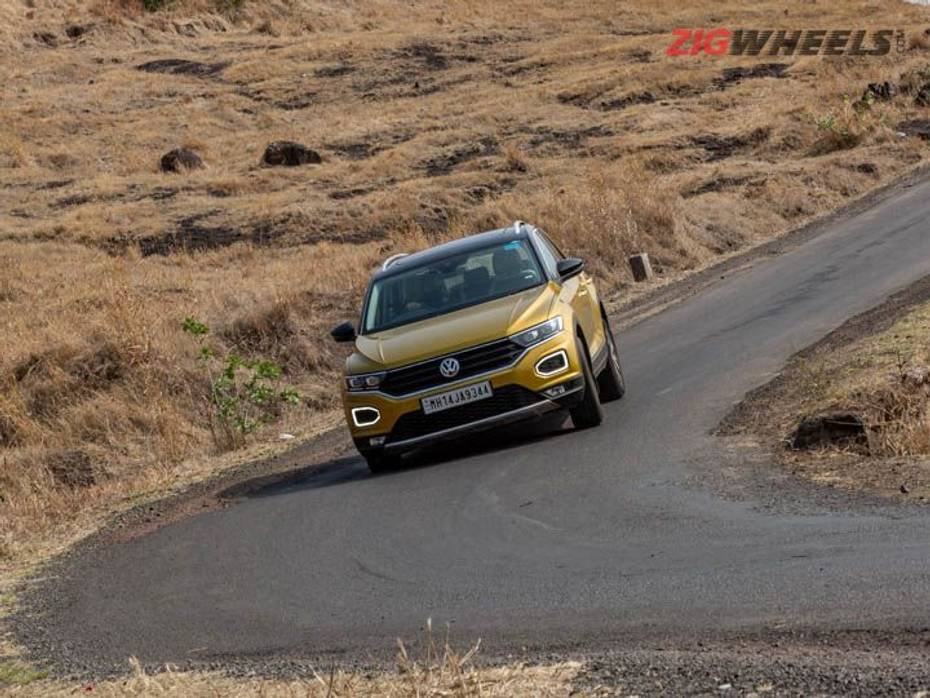
Even if you give it the full beans, the T-Roc moves forward in an elegant yet energetic manner. There is no unnecessary wheel spin, instead, all the power is put down to the ground gracefully. The traction control system has been calibrated well, and most people will never even feel it cutting power to keep the wheels from spinning.
Then there is the ‘Sport’ mode. Simply pushing the gear shifter down one last time in D mode will put the T-Roc into Sport mode. The throttle becomes an extension of your foot, while the gear shifts (which are now quicker) are still well masked and can rarely be felt. Triple digit speeds come in 9.86 seconds, and all that is left for you to do is plaster a smug grin all over your face.
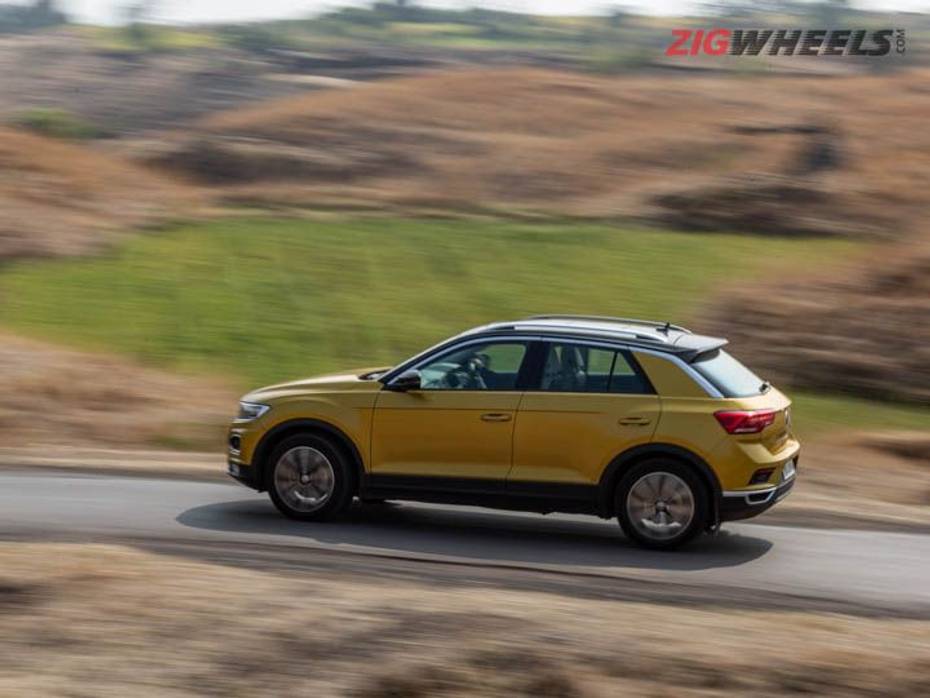
The only indicator that you are pushing the T-Roc at this point is the engine note, which starts becoming audible inside the cabin once you are past the 3,000rpm mark. Apart from the engine note at higher rpms, the T-Roc does a good job of ironing out the tyre and wind noises, thus achieving excellent NVH levels.
Volkswagen’s decision to ditch oil burners means that the T-Roc can only be had with a petrol engine. However, petrol is relatively expensive, and in a car like the T-Roc (which eggs you to push the boundaries of that tachometer) it can empty your wallet real fast. But Volkswagen has come up with a rather ingenious way around it.
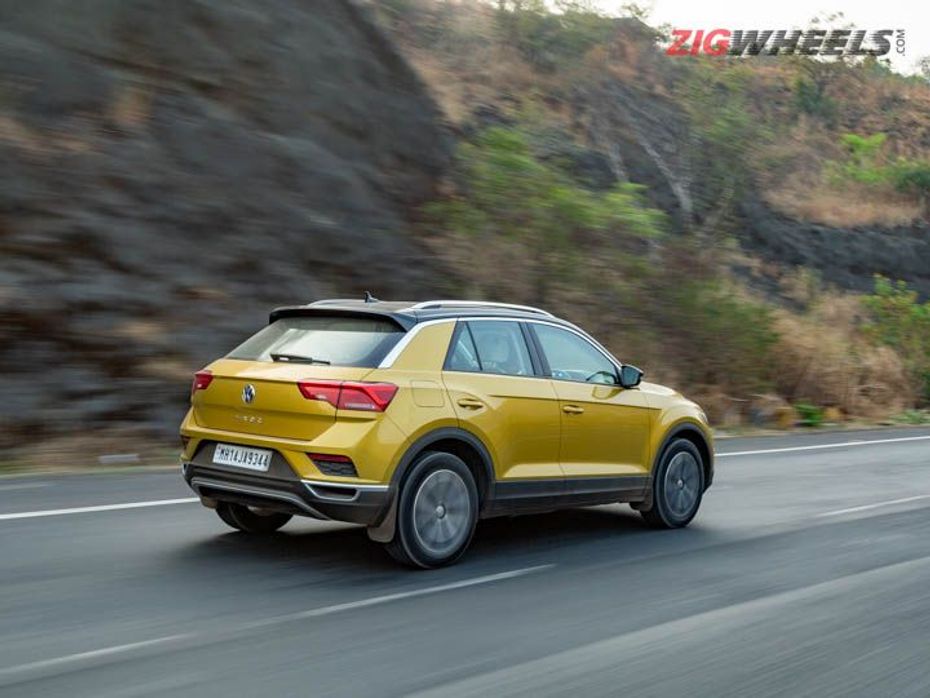
Cushy ride
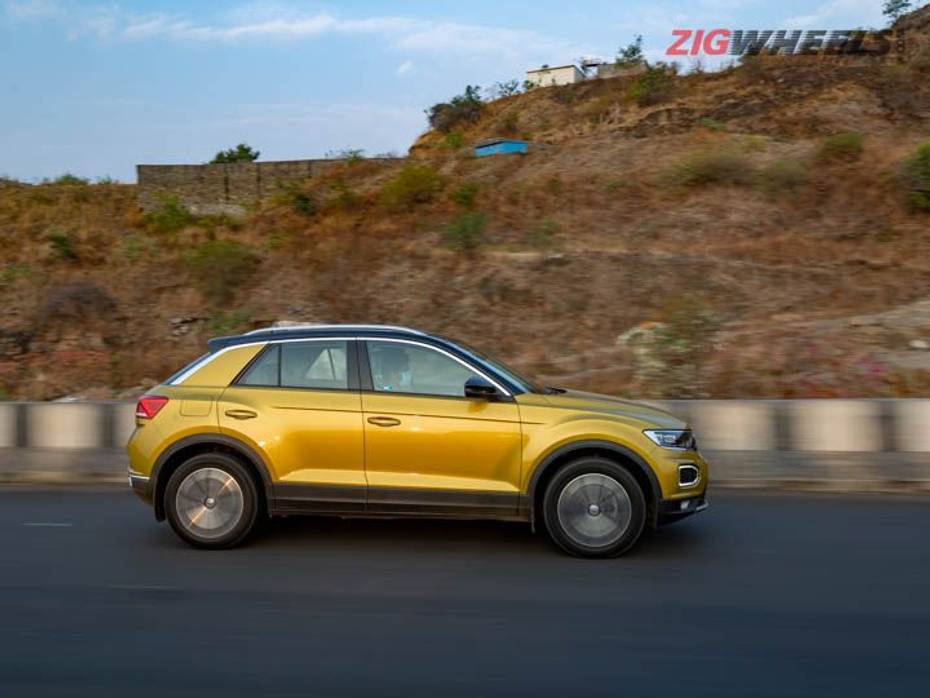
The T-Roc’s ride is another highlight. It’s not the most plush suspension out there, but it does a good job of flattening all the small obstacles in its path. The smallest details on the road are fed into the cabin, but their harshness (impact and noise) is noticeably cut out, and all that’s left behind is a residual sensation of the kind of surface underneath. And as speeds rise, this effect gets amplified to a point where the SUV feels more and more composed over not-so-good roads.
That is until you reach a large speed breaker or a pothole. If you don’t slow down, get ready to hear that traditional thud you are used to hearing from a Volkswagen. Another weak point of this suspension is its low-speed ride. Going over bumps and rough surfaces, the cabin tends to move from side to side, which can be somewhat jarring. The only way to overcome it is by increasing speeds over such surfaces.
It’s a Canyon-carver
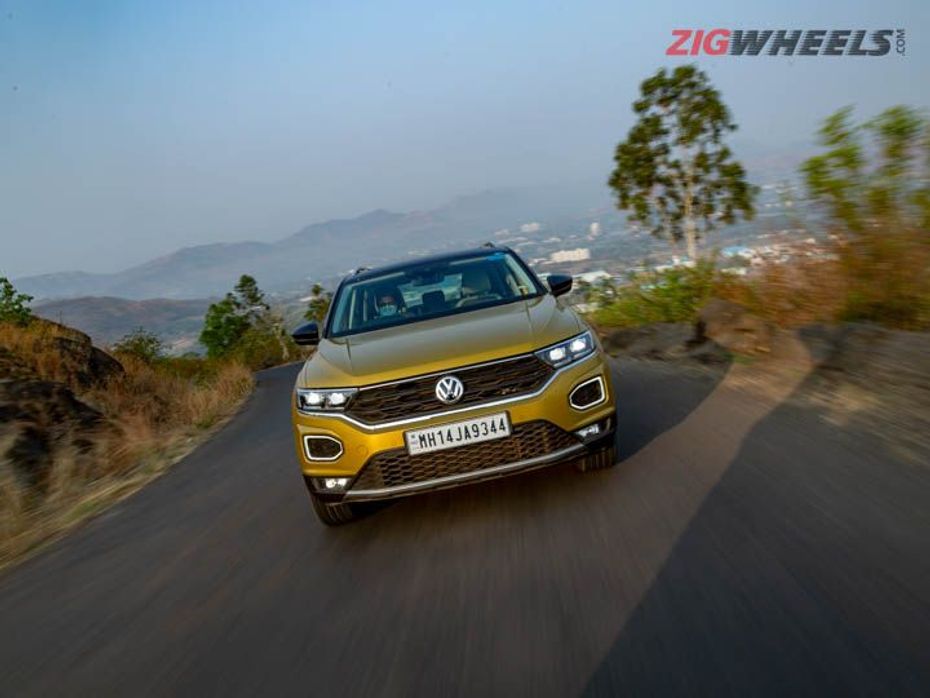
Once those speeds are up and you start attacking corners on a twisting mountain road, any ill effect of that inherently stiff suspension is forgiven and forgotten. It might not sound true as the T-Roc is technically an SUV, but the twisties are the T-Roc’s favourite hunting ground. Body roll feels non-existent, and the 215/55 R17 tyres stick like Fevi Kwik, even to the most aggressive lines through a corner.
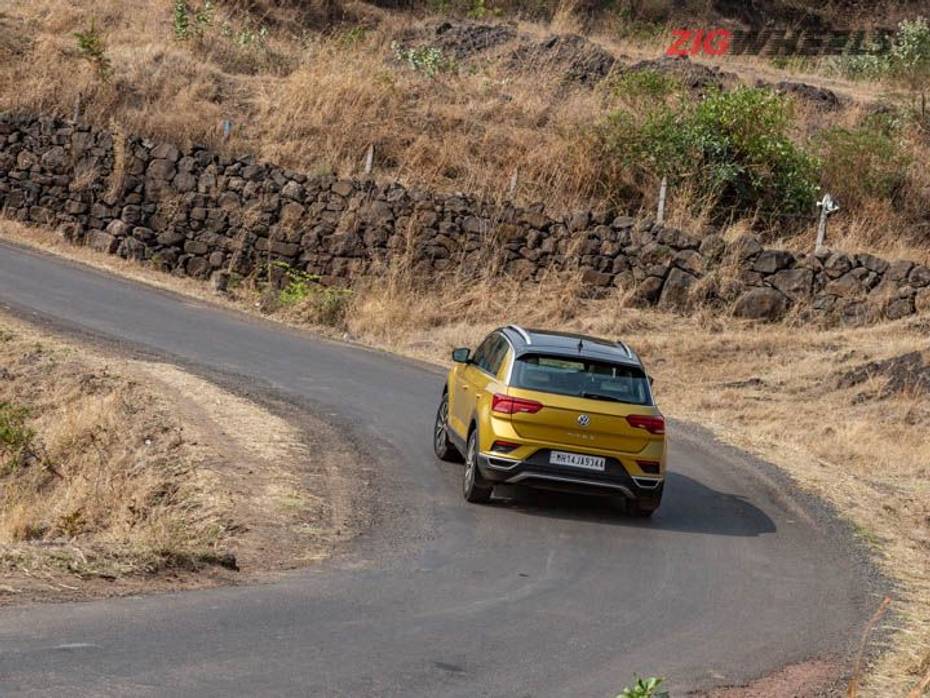
The steering on the T-Roc features quite a lot of electronics, so it was never going to be a very lively source of feedback. It, however, allows you to cruise at triple digit speeds with confidence. And when you do start pushing things, the tiny amounts of feedback can be felt through the steering, just when you need them the most.
That leaves us at...

The Volkswagen T-Roc is a good example of what VW cars feel like when they are experienced in Europe. It manages to marry a blend of performance, elegance, and convenience that is not present in most cars in its price bracket. And frankly, the premium you pay can be justifiably attributed to better build quality and refinement over its rivals. Therefore, if you think the T-Roc ticks all the right boxes for you, go for it.
There are two problems, though. Firstly, Volkswagen had only brought 1,000 units of the T-Roc, all of which are sold out. Thanks to the demand, the company is now planning to bring in another batch of the T-Roc in the upcoming months. So, if you wish to buy the T-Roc, don’t forget to check at your nearest VW dealer.
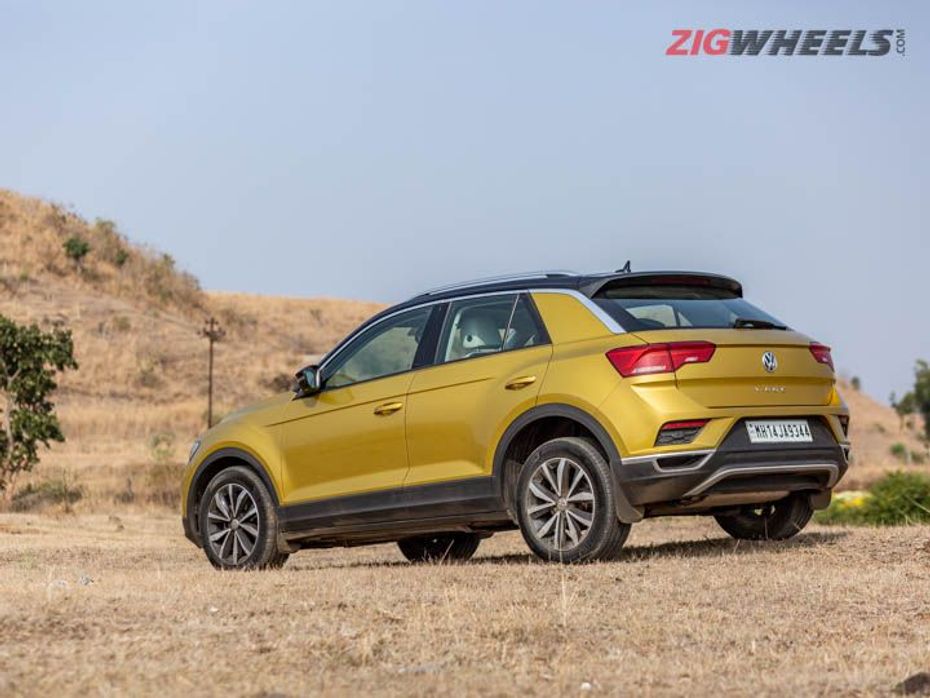
The second problem is that the T-Roc is a CBU import. Even though it is backed by a rock-solid warranty and service package, the price of rarely used spares could prove to be expensive. Also, they could even be unavailable at certain times. This could lead to your T-Roc spending more than the intended time at the service centre.

Volkswagen’s Strategy to ‘Accelerate’ Its EV Drive

Hyundai Creta Electric: Sensible, Not Sensational

Mahindra XEV 9e First Drive Review

Tata Curvv EV Review: More Than Just Eye Candy
 Mahindra BE 6
Mahindra BE 6
 Hyundai Creta Electric
Hyundai Creta Electric
 Mahindra XEV 9e
Mahindra XEV 9e
 Tata Curvv EV
Tata Curvv EV
 Jeep Compass
Jeep Compass
India's largest automotive community
 Maruti Suzuki Introduces This Safety Feature For The FIRST Time With The e Vitara, Along With 7 Other Comfort And Convenience Equipment
Maruti Suzuki Introduces This Safety Feature For The FIRST Time With The e Vitara, Along With 7 Other Comfort And Convenience Equipment
 Mahindra XEV 9e: Upsides And Downsides Of The Premium Electric SUV Coupe
Mahindra XEV 9e: Upsides And Downsides Of The Premium Electric SUV Coupe
 8 Features The Kia Syros Gets Over The Tata Nexon
8 Features The Kia Syros Gets Over The Tata Nexon
 Skoda Kylaq - Power-Packed Performance
Skoda Kylaq - Power-Packed Performance
 Volkswagen Virtus
Rs. 11.55 Lakh
Volkswagen Virtus
Rs. 11.55 Lakh
 Volkswagen Taigun
Rs. 11.69 Lakh
Volkswagen Taigun
Rs. 11.69 Lakh
 Volkswagen Tiguan
Rs. 38.16 Lakh
Volkswagen Tiguan
Rs. 38.16 Lakh
 Tata Punch
Rs. 5.99 Lakh
Tata Punch
Rs. 5.99 Lakh
 Hyundai Creta
Rs. 11.10 Lakh
Hyundai Creta
Rs. 11.10 Lakh
 Mahindra Thar ROXX
Rs. 12.99 Lakh
Mahindra Thar ROXX
Rs. 12.99 Lakh
 Tata Nexon
Rs. 7.99 Lakh
Tata Nexon
Rs. 7.99 Lakh
 Mahindra XUV700
Rs. 13.99 Lakh
Mahindra XUV700
Rs. 13.99 Lakh